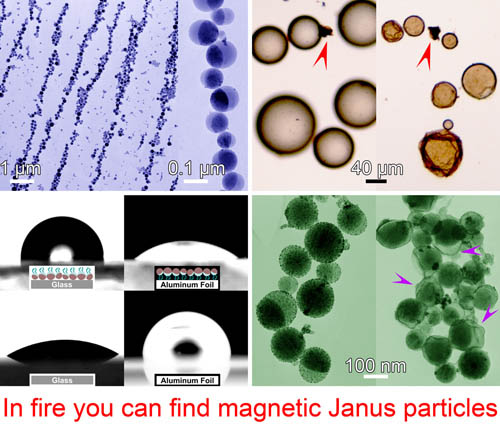“Janus”-type particles, herein referring to spherical particles consisting of bi-compartments with different chemical compositions, should be superior to symmetrical nanoparticles as they hold both physical and chemical properties of each part. Consequently, opposite properties may simply be combined into single particle, which offers the Janus particles great potentials for numerous applications. However, this kind of nanoparticles is very challenging to synthesize.
Recently, the researchers of the Institute of Chemistry, Chinese Academy of Sciences have reported a novel type of γ-Fe2O3||SiO2 Janus particles prepared by a flame synthetic approach by combusting an organic solution of Ferric triacetylacetonate (Fe(acac)3) and tetraethyl orthosilicate (TEOS). In general, the current synthetic route is similar to the liquid-feed flame spray synthesis except that no gas is introduced to aerosolize the organic solution of the precursors while they are combusting. The Janus particles obtained in the flame are made up of crystalline maghemite and amorphous silica parts, denoted as γ-Fe2O3||SiO2. They present perfect uniformity in structure and excellent aqueous dispersibility. The excellent colloidal stability of the γ-Fe2O3||SiO2 particles further offers versatile choices for physically or chemically manipulating the Janus particles to form different types of assembling structures, i.e., chains, microcapsules, monolayers of oriented Janus particles. By using the Janus particles as a partly sacrificial template, hollow capsules with a magnetic core and a soft PVP/Au nanoparticles shell can also be created. All these experiments strongly suggest that the current approach has paved a new route towards nanoparticles with novel structure and properties which may not be achieved under conventional conditions.
Advanced Materials , 2009, 21, 184-187.

